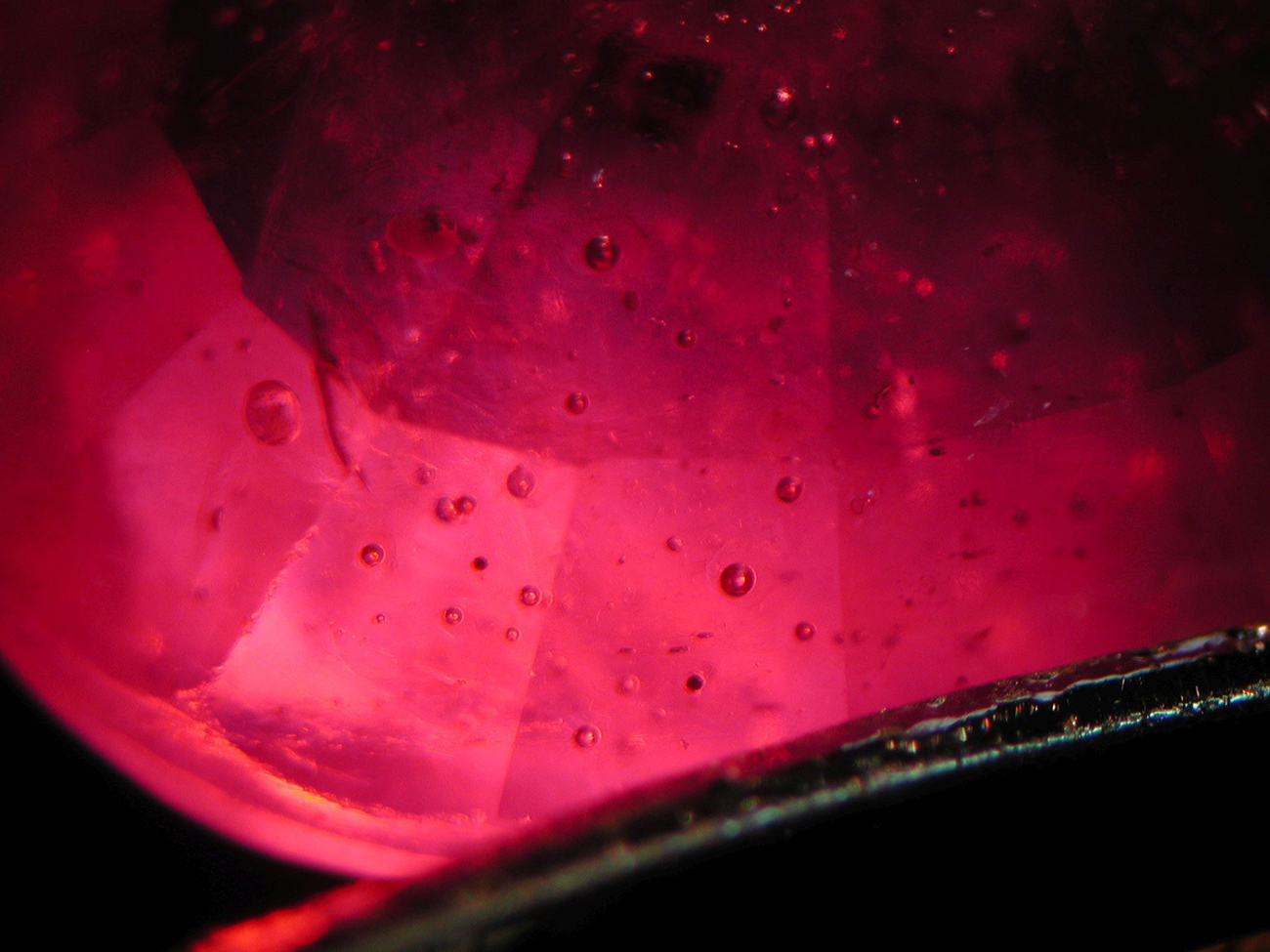For many lower-quality, nearly opaque rubies, treaters have discovered a technique that basically pushes melted glass deep into the stone's heavily included interior, sometimes creating ratios up to 50:50 in terms of ruby versus glass material. The resulting gemstone is much more clearer and more marketable, so some people end up buying these stones overestimating their actual value.
Glass-filled or glass-composite stones do not look like synthetic stones to most people, at least through viewing by the naked eye. Their many cracks and crevices lend to the feeling of authenticity. Customers are more weary of stones that are perfectly clear and transparent. Many are less suspecting of these types of materials.
There is much debate on the nomenclature used for these types of products. On the one hand, the base material is indeed natural corundum, but the starting material is also so poor in quality that it would never have made it into the jewelry industry on its own merits. Some stones are filled with so much glass that people wonder if they should be called "composite-rubies" or "composite-gemstones" which is what some laboratories label them as.
While one might refer to them as 'real' due to the fact that the main stone is still natural corundum, the question you should be asking, is how should you see the value of such a product. The price for a majority glass-filled rubies is comparable to that of a flame fusion synthetic stone, sometimes higher or lower depending on the quality. The price for a high quality, untreated or heated-only natural ruby on the other hand, can be many times more expensive, reaching tens of thousands of dollars in range.
Note also that while the glass does improve the ruby's appearance drastically, it is much softer than the host gem, and because of its unique composition, poses a durability issue with regards to most cleaning methods used today. Many types of jewelry cleaners that are routinely used in the re-setting or repair of jewelry can eat away at the glass, causing it to degrade even after a few minutes.
The glass material is usually soft, as many treaters use a type of lead-glass, in order to match the refractive index of ruby (to better conceal the fractures). A material like this, can be easily abraded, and hurt by high temperatures like those caused by steam cleaners. Some reports have even noted that ultrasonic cleaning can also damage the glass filling of these stones, so beware of the implications that come with buying them. They are very affordable if bought with proper disclosure, but affordability comes with complications. Always ask your jeweller if your ruby has been treated in any way.
If they say that a ruby has been heat treated, make sure that heat is the only enhancement done, as this is quite normal and acceptable in the trade. Heating with fracture-filling or chemical diffusion can drastically lower the stone's value, so it's good to be aware of what type of gem you're actually buying.


